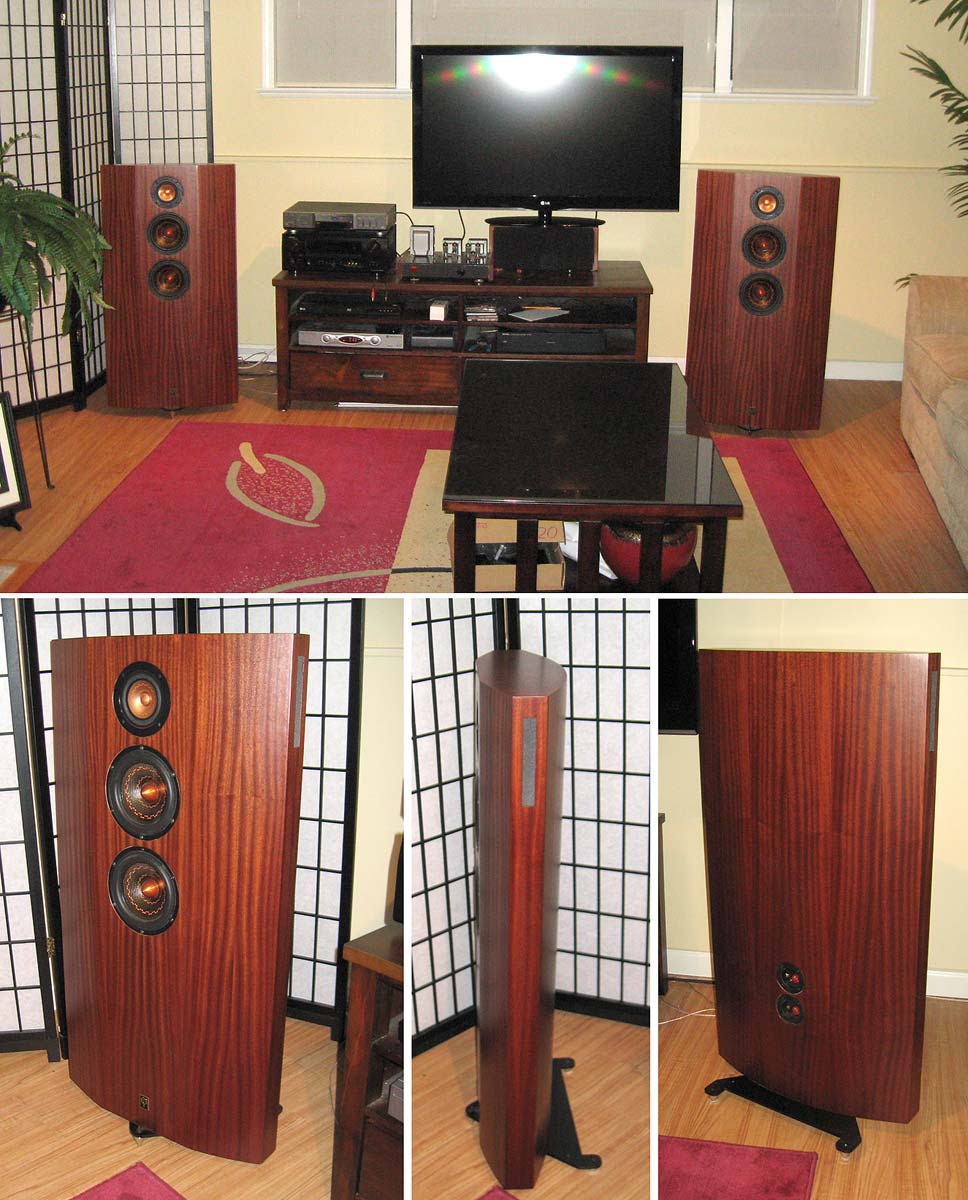I have some old hardboard, the dark brown stuff that is smooth on one side and comes in max 1/4" thickness. This stuff is strong! It's light and seems like it would make a pretty good material if weight were a large concern. The obvious weakness is the lack of thickness to hold screws and flex over large flat areas, but some bracing would fix that. But I just built a 5" x 5" box and this thing is light and super strong even at 3/16".
I'm thinking I will make a small set of speakers and see how they handle screws and see if its good but so far with my little test box its great! Also cheap $25 for 4x8 vs $55 for 5/8 MDF.
Maybe it would make a good material to add to the 5/8th to give it more rigidity? Has anyone experimented with hardboard?
I'm thinking I will make a small set of speakers and see how they handle screws and see if its good but so far with my little test box its great! Also cheap $25 for 4x8 vs $55 for 5/8 MDF.
Maybe it would make a good material to add to the 5/8th to give it more rigidity? Has anyone experimented with hardboard?
I've been thinking of using it as a component layer in a layup along with other materials. I bet a 3/4" with this on two sides and a 1/4 butyl rubber floor mat (as is sold in farm supply stores) would make a nice, dead panel. 1/4" cork in sandwich with this stuff would work too, I bet.
Why does mineral spirits stop it from laminating? I laminated a test piece and it worked fine, but that was not on the smooth side.I believe that is known as Masonite.
I’ve used it as a releasable layer making molds, not sure if there is an adhesive that will work with it for laminating however, as it contains mineral spirits.
Thank-you for saving me some "heartache"! I've thought Masonite was akin to Bakelite (Polyoxybenzylmethylenglycolanhydride) - as another one of those turn of the century modern materials.not sure if there is an adhesive that will work with it for laminating
I did see some indoor flooring display pieces, in which the flooring being sold was backed by this stuff in perhaps an 18" square panel - with some mystery damping / adhesive between. It appeared to serve the function of both adhesive and damping anyway; was yellow in color and perhaps 1-2mm thick. One would think nobody want a creaky floor and perhaps there's stuff for that - I noted that panel was very dead to the rap.
Ah, I see my 2nd favorite pair of dave's speakers 🙂
This hardboard stuff works great for curved baffles and large horn walls if you layer it. The smooth side need to be roughed up to bond it. I recommed epoxy resin for bonding, using 3 layers of 1/4" to make 3/4" panels. Just be careful working with the dust from it as it contains bi-phynels - its actually phenolic material.
Masonite = HDF or high density fibreboard. As opposed to MDF, medium density fibreboard. Should bond with any 'wood' adhesive: PVA in its various forms, epoxy, urethanes, even 'hide' glue.
Some Karlson enclosures, such as my ~1955 Karlson Twelve (then called the "Karlsonette" and introduced at the 1954 Hotel New Yorker Fair) had their outer shell and "wings"/"curtains" made of 5/8" plywood laminated to 1/8 " hardboard and a Formica covering which made a reasonably inert wall and nice reflective surface for the front chamber.
Attachments
Perhaps someone else in the UK can comment, but my memory of 'hardboard' in the UK is of something typically 3-5mm smooth on one side rough on the other, made from reclaimed, pressed wood. Generally dark brown, easy to bend and cut with a fibrous texture if snapped.
The dark brown smooth on one side stuff used to be "Masonite". Invented by a guy named Mason to use-up wood waste. The notable part is that there was no added glue, it was all cooked wood (with a touch of surface oil for polish and anti-damp).what i call hardboard
There is also a smooth both sides product. We had acres of the stuff as music library shelves.
True Masonite is very different from particle board which is raw sawdust/flakes with one of several binders added, and normally light tan.
Everybody copied it, Masonite held the market for a while, then added doors. Then went broke in an economy stumble, and came back.
Thing is: many of the tasks Masonite was good for, there was some cheaper way to do it. Masonite became the cheap alternative to better solutions.
Whole houses have been sheathed in (specialized) Masonite. That was part of the problem at Willingboro NJ. (They must have replaced most of it by now.)
Boats and quonset huts too. Expensive Herman Miller chairs. Toys, artwork, small furniture. I remember a Masonite with "bathroom tiles" pressed into the surface. Light, easy to fit, paints any color to suit your 1950s vanity and toilet.
- Home
- Design & Build
- Construction Tips
- Using Hardboard in construction

